
Hello student, here’s your Academy Rector once again. This time we will be delving into the colorful world of Kaleidoscope. I assume you know the format. You know it don’t you? Ah I see; you’re one of those students who doesn’t play anything else than Standard – Draft – Sealed. Well, fortunately for you after this and the next lesson that list will be one format longer.
The rules of Kaleidoscope are very simple. Only multicolored cards are allowed and the cardpool is Extended’s card pool. That simple. Anything else is the same (deck size, sideboard, number of same cards allowed etc…). The banned list currently has two cards and they are Glittering Wish and Anathemancer. By the way, there are no restrictions about the lands (as long as they’re Extended legal).
Got it? Yes? Want to try it? Good! Let us start then!
STRATEGIES
Just like in any other format, you can choose to play Aggro or Control or Combo or Alternate Win Conditions in Kaleidoscope too.
Aggro?
Control?
Combo?
Alternate Win?
In this lesson I will teach you how to play Aggro in Kaleidoscope. It is currently the best way and the best strategy in the format due to the lack of playable and efficient Mass Removals. And therefore Aggro may be your quickest and shortest path to victory in the format without having too much trouble. The other strategies are also playable but as I said, Aggro nowadays seems to be the safest way.
And by the way student, the decklists I will show you in this lesson are not some casual fun decks. You can build your own fun decks on your own. No, the decks you will see are all proven Tier-1 decks of the format.
And in our next lesson, I will talk about the other strategies. Control or Combo or Alternate Win decks can also be successful in Kaleidoscope but we will focus on Aggro this time.
Anyway, let me start without further delay.
AGGRO
Right to the Dome
Due to the cardpool of the format and the lack of efficient Mass Removal, the most successful decks nowadays in Kaleidoscope are all Aggro decks. So if you want to be successful without having troubles, then Aggro would be the best strategy for you.
Just check this out:
Dark Bant
|
| ||||||||
This is a typical Aggro deck build around Doran, the Siege Tower that I used to play a lot in 2man queues. The deck, which is called Dark Bant by the way, is very straightforward. With the twenty six creatures available, the aim is to lower the opponent’s life total from twenty to zero as soon as possible. And I can tell you from my personal experience with the deck that turn six kills are very common whereas turn five kills also do happen.
Just check this screenshot to understand what I mean:
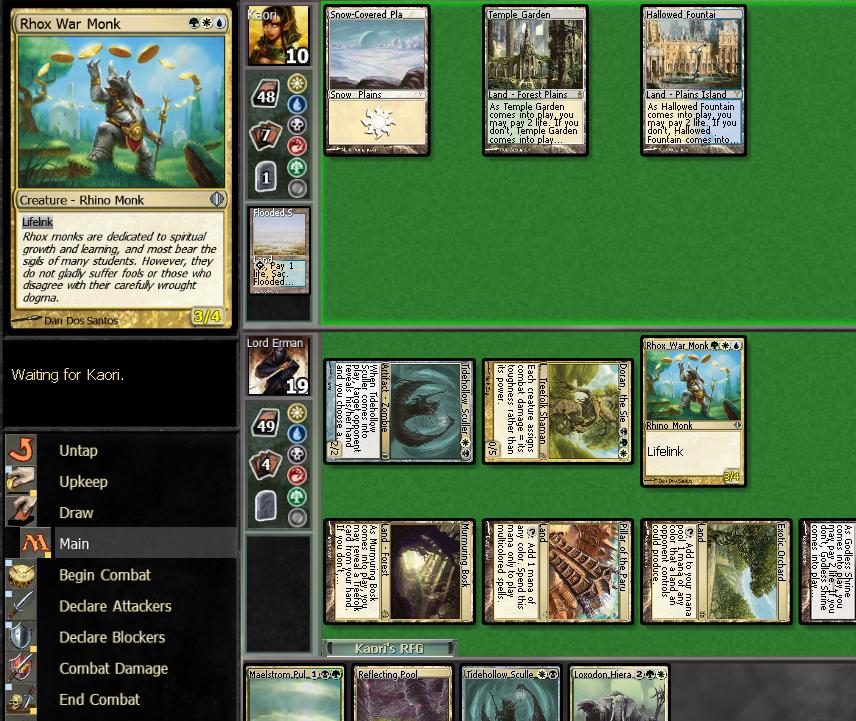
I started the game and played a tapped Murmuring Bosk. The second turn I played a Pillar of the Paruns, played Tidehollow Sculler and removed his lone removal from his hand. The third turn I played a Doran and then the fourth turn I played a Rhox War Monk. And my poor opponent had nothing else to do other than typing “gg” in return.
This deck above is only a way to play Aggro. Actually these days people very much like to abuse the new Cascade mechanic that came with Alara Reborn. Here’s a typical such deck.
| Creatures4 Enlisted Wurm
16 cards Other Spells 20 cards |
Lands4 Pillar of the Paruns
24 cards |
This is another proven deck that saw more than a few Top-8s in Kaleidoscope events. There are many Cascade deck variants but you can use the list above as a reference for this decktype.
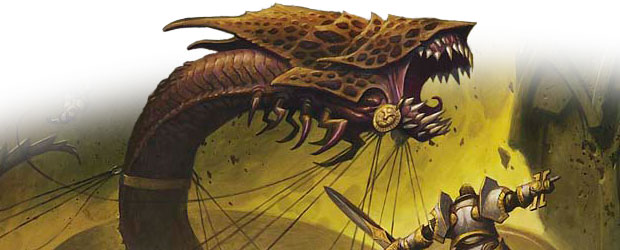
Cascade decks actually are my favorites these days too. Just when the opponent thinks that he has everything under control, you cast a Naya Charm at the end of his turn, take back that Enlisted Wurm from your graveyard, and during your turn you start having fun!
Many times Enlisted Wurm’s game text becomes this:
When Enlisted Wurm enters the battlefield, put a 3/2 red and green Elf token with haste that has “When this creature enters the battlefield, destroy target permanent”.
Confused? Well student, actually this is what I mean:
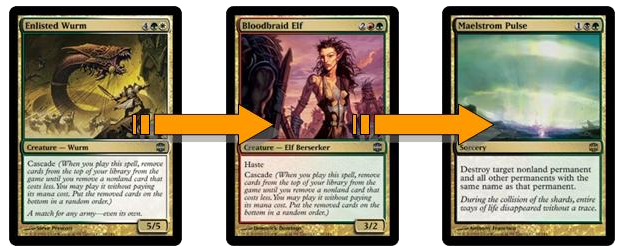
Got it now?
And that opponent, who cleared the table during his turn and made you discard two cards and who was thinking that everything was under his control, has now lost his not one but two 10/10 Knight of the Reliquarys all of a sudden and has to deal with your 5/5 monster and your 3/2 sneaky haste elf! Now this is what I call a bargain.
As you see, there is a style in Aggro in Kaleidoscope. It’s not mindless 1/1 creatures attacking the opponent until they kill him. No, in Kaleidoscope we do it with style. And there are some other ways for Aggro which are even more elegant than the two decktypes you saw above.
YOU CAN LOOK…
but you can’t touch
Kaleidoscope is a format where only multicolor cards are allowed. And this means that a simple creature such as the one below can turn easily into a real nightmare for the opponent:
This simple Vedalken Scout stops all the red monsters; from Woolly Thoctar to Bloodbraid Elf and he is also immune to Terminate, Electrolyze and even to Firespout. Now if you play a red based deck, how will you get rid of him? And no, Path to Exile or Terror are not allowed in the format!

Five synonyms for “pain in the neck”
Things get even worse if a creature has protection from more than one color. Two is horrible but three is plain sick. Need a little hint student?
I think that you get the idea now for the next deck.
| Creatures4 Steward of Valeron
25 cards 10 cards |
Lands4 Pillar of the Paruns
25 cards |
Another very straightforward deck which is almost untouchable. Recently with a similar deck I had some success in Kaleidoscope 2mans as well as in one big event.
The opponent is most of the time helpless against your Stillmoon Cavaliers, Oversoul of Dusks and your Uril, the Miststalker. Uril has no protection from a specific color but he has protection from the opponent! And things get really wacky when you enchant it with a Shield of the Oversoul when your Wilt-Leaf Liege is also on table.
The deck also has two other important early game threats. One is Kitchen Finks who is giving you two life each time it enters the battlefield. Considering it has persists, it enters the battlefield more than just one time!
And the other one is Sprouting Thrinax. Yes it dies to every removal there is but that’s the point! You chump block with it and get your three Saproling tokens. And then they start chump blocking the opponent’s monsters until your real monsters such as Uril and Oversoul show up.
And please look at the Mystic Enforcers in the sideboard. If “accidentally” your opponent is playing black, then not even the Gods of Magic can save him from the inevitable.
YES MY LIEGE!
Lieges of Shadowmoor are also another excellent way of building decks around. Above you’ve seen three decks and all had Wilt-Leaf Liege in them.
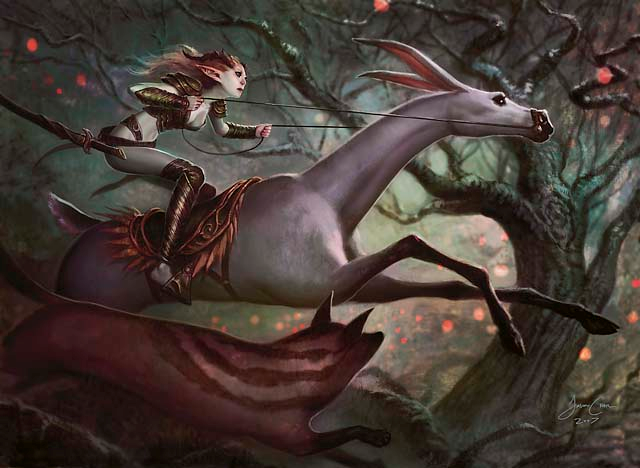
Even though very powerful, Wilt-Leaf Liege is definitively not the only playable liege in the format. Okay not all are very interesting but some, such as the ones below, are very useful in the right deck.
Of course you can build a Boros deck with four Balefire Lieges or build a Gruul deck with four Boartusk Lieges but why stop there? Why use only two colors? Let’s mix those guilds! And what do we got now student? What is Red/Green/White called? Naya? Yes that’s true but what else?
It is called Zoo my dear student. Zoo. The one aggro deck that dominates all the formats and the king of all the Aggro decks out there! And here’s its Kaleidoscope version.
| Creatures4 Figure of Destiny
25 cards Other Spells 11 cards |
Lands4 Flagstones of Trokair
1 Forest 1 Plains 24 cards |
This is another deck type that we get to see more and more in Top-8s of big Kaleidoscope events. Knight of the Reliquary is the superstar of this deck. If left unanswered, she can reach to some really ridiculous sizes and win the games on her own.
Balefire Liege works as this deck’s late game tool. If games don’t end when you prefer them to end, you just play this liege and watch it kill the opponent with its ability.
And one other important card in this deck is Naya Charm. Each other Shardname-Charm cards are played in Kaleidoscope but none is used for all its three options. Jund Charm is only used as a Pyroclasm variant, Esper Charm is the new Divination at instant speed (the old Counsel of the Soratami), Bant Charm is used as a removal or as a counterspell against instants and Grixis Charm is only used as Sudden Death without Split Second.
But Naya Charm can either be used to deal three damage to that annoying Boggart Ram-Gang or it can get back that Knight of the Reliquary from the graveyard back to hand or better it can tap all the opposing creatures and clear the path for your 10/10 Knight of the Reliquarys. In any way, it is by far the best Shardname-Charm available in Kaleidoscope.
And now student, I will show you one last way of building a successful Aggro deck in Kaleidsoscope. A deck that is even capable of winning in only a few turns. If you think the decks I showed you above were fast, just think again after this one. But for this deck we have to travel to another shard. Jund and Naya are the main shards of Aggro but there is one other which is capable of creating some very solid ones.
Dear student, welcome to Bant and its Finest Hour.
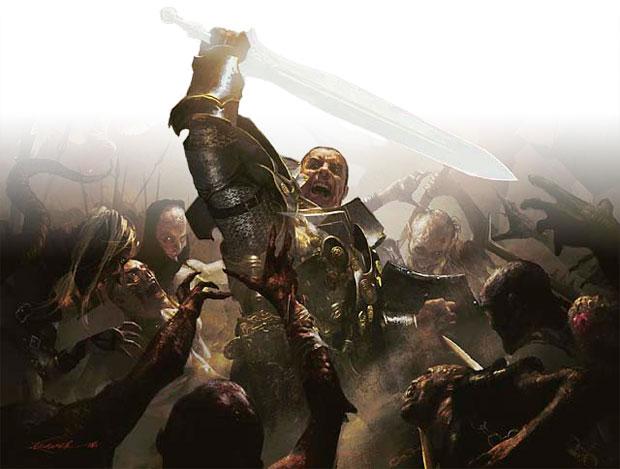
And here’s the decklist.
| Creatures4 Jhessian Infiltrator
29 cards Other Spells 7 cards |
Lands4 Pillar of the Paruns
24 cards Sideboard 15 cards |
There’s not much to say about this deck. Just the sheer number of creatures is actually telling everything. So you play a land, play a creature, attack, play a Finest Hour in the meantime, and rinse and repeat until the opponent’s life total reaches zero. By the way please note that after Finest Hour triggers, it doesn’t matter whether your attacking creature dies or not before it can deal its combat damage. You will get another extra combat phase in any case.
Okay student, our first lesson about the decktypes of Kaleidoscope ends right here. Next time we will talk about the other three ways of winning; Control, Combo and Alternate Win Conditions.
Until then, have fun turning your colorful and aggressive creatures sidewards in the exciting world of Kaleidoscope.
See you online,
Nafiz Erman, aka Lord Erman


hi,
i am playing kaleidoscope with a few friends of mine and i find this article very interesting but i do not find an article fpr the other types of playing like control, can you please tell me where to look?
thanks for all
hagen
Hello Hagen,
the second part of the article was not published due to time constraints of the author. We might publish another short article about the Kaleidoscope control decks in the future.